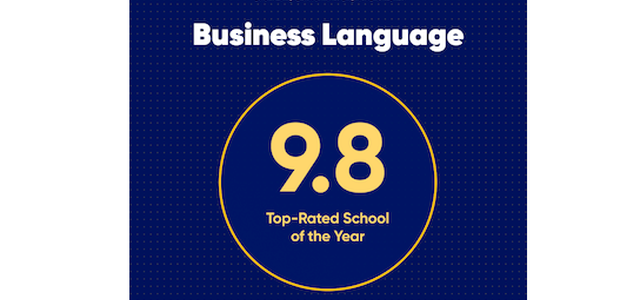
Presentations, negotiations, correspondence – practical cases for a professional context
In today’s world, where every email, meeting, or presentation can open or close the door to partnership, English language skills are turning from a formality to a competitive advantage. Business English is not just a vocabulary of “meeting”, ‘deadline’ and “profit”. It is a language of confidence, clarity, and professional style.
Today we will analyze three situations where English really works: presentations, negotiations, and business correspondence. And we’ll use real-life cases to illustrate them, without boring theory.
You can know all the words in the world, but if you speak without structure, the audience will lose attention in the second minute.
Case study:
Olena, the marketing director of a Ukrainian company, was preparing a presentation for investors from London. She had translated the text of the slides into English, but the presentation sounded mechanical. During a test lesson, the teacher noticed that the problem was not in grammar, but in presentation.
Which helped:
She replaced formal expressions such as “I will present our marketing strategy ” with more lively ones:
● “ Let me walk you through our growth story.”
● “ Here’s what made the difference for our customers.”
I added logical connections – “First, let’s take a look…”, “This brings us to the next point...”, “To wrap up…”.
And suddenly, everything started to play – my voice became more confident, the audience did not look away.
Tip: Before a presentation, always read the text out loud, like a conversation, not a report. English for business is not a theater, but a dialog.
When we say “negotiations in English,” many people immediately sweat. Not because of the language, but because of the fear of “saying the wrong thing.” And here the main thing is to learn to speak diplomatically but clearly.
Case study:
Andriy, the head of the IT team, was discussing a contract with German partners. His phrase “We don’t agree with your terms ” gave the impression of a categorical refusal. After a short consultation with his business English teacher, he changed his approach.
Now he said:
● “We’re not fully aligned on this point yet – could we explore some alternatives?”
● or “We’d prefer a slightly different approach.”
And that was it – the negotiations became constructive, the tone softer, and the deal closer.
The lesson from this case is that in business English, it’s not just what you say, but how you say it. The choice of a single word can determine whether you come across as a confident partner or an impolite opponent.
Email is your business card in the business world. Sometimes it is the letter that decides whether your proposal will be read or postponed “for later”.
Case study:
Maria, an HR specialist, sent emails to candidates after interviews. Her texts were too formal:
“We would like to inform you that your application has been approved.”
After a few lessons, she learned to adapt her style to the modern business context:
“We’re happy to let you know that we’d love to move forward with your application!”
Less formality means more humanity. And this is what creates a sense of professionalism in the modern business world.
The golden rule: write as if you were communicating in person. Even a short email can sound warmer with little things:
● “ Thanks for getting back to me so quickly.”
● “ Hope your week is going well!”
● “ Looking forward to hearing your thoughts.”
Business English is not a set of patterns, but a sense of style. When you speak English naturally, your partners do not feel like a “foreigner trying to do his best” but a professional who speaks the international language of business.
Success in this is not about perfect grammar, but about your tone – confident, friendly, clear. This is what makes a language “working”.
To prevent English from being “switched on” only at meetings, you need to weave it into your daily routine:
● Listen to podcasts about business in English (for example, “The English We Speak” by BBC Learning English);
watch short videos on YouTube about negotiations – but pay attention not only to the words, but also to the tone of voice;
● keep a “mini diary” with working phrases in English – even 3 sentences a day will make progress.
When you start thinking in English in a business context, translation becomes redundant. You don’t translate anymore: “We don’t agree” → “We disagree”, but immediately feel the nuance:
● “We’ re not on the same page yet. ”
● “ That won’t work for us. ” – firmly but politely;
● “ Let’s revisit this later. ” – diplomatically.
This is how language becomes a tool of influence, not just a skill for a resume.
Business English is not about “speaking correctly”. It’s about sounding professional, thinking strategically, and being yourself.
It works when you are not afraid to be a real person: to smile during a presentation, to clarify with respect, to ask again if you are not sure, or to write briefly and sincerely instead of using clerical templates.
After all, in the 21st century, business is built not only on products or deals, but on clear, friendly communication.
And if your English helps to build trust, it is English that really works.
Prepared by the Corporate English Department “Business Language”